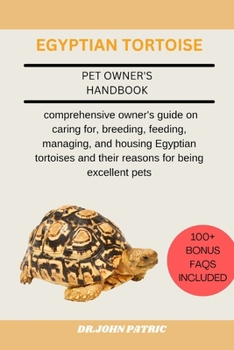Egyptian Tortoise: comprehensive owner's guide on caring for, breeding, feeding, managing, and housing Egyptian tortoises and their reaso
Overview of Egyptian Tortoises:
A more thorough introduction to Egyptian tortoises that includes information on their background, natural habitat, legal issues, and current state of conservation.
Small and endearing, the Egyptian tortoise (Testudo kleinmanni) is a resident of North Africa's semiarid and desert regions, including Egypt, Libya, and portions of Israel.
These tortoises are becoming more and more well-liked among reptile aficionados across the globe because of their charming personalities, elaborate shell patterns, and small stature.
Egyptian tortoises are members of the Testudinidae family, which is also home to other species of tortoises distinguished by their dome-shaped shells and terrestrial lifestyles.
Egyptian tortoises, with females being larger than males, usually reach a maximum length of 1215 centimeters (4.75.9 inches), unlike some larger tortoises. Their shells have a pattern that combines black, brown, and yellow markings, which helps them blend in well with their dry surroundings.
Primarily herbivorous, these tortoises consume the grasses, flowers, and succulent plants that grow in their natural habitat. Their amazing adaptations over millennia show their capacity to survive in difficult desert circumstances, including high temperatures and little water supply.
Natural Habitat and History
Egyptian tortoises have historically lived in semiarid and arid areas of North Africa and the Middle East.
They are especially linked to ecosystems in rocky and sandy deserts, where there is little flora but enough to meet their nutritional demands. These tortoises have strong limbs and sharp claws that they use to dig burrows into the ground where they can hide from predators and harsh temperatures.
By spreading seeds and altering the dynamics of the plants, Egyptian tortoises contribute significantly to the ecology in their natural habitat. They are also a prime target for a variety of predators, such as snakes, animals, and birds of prey, which emphasizes their place in the food chain of the desert.





